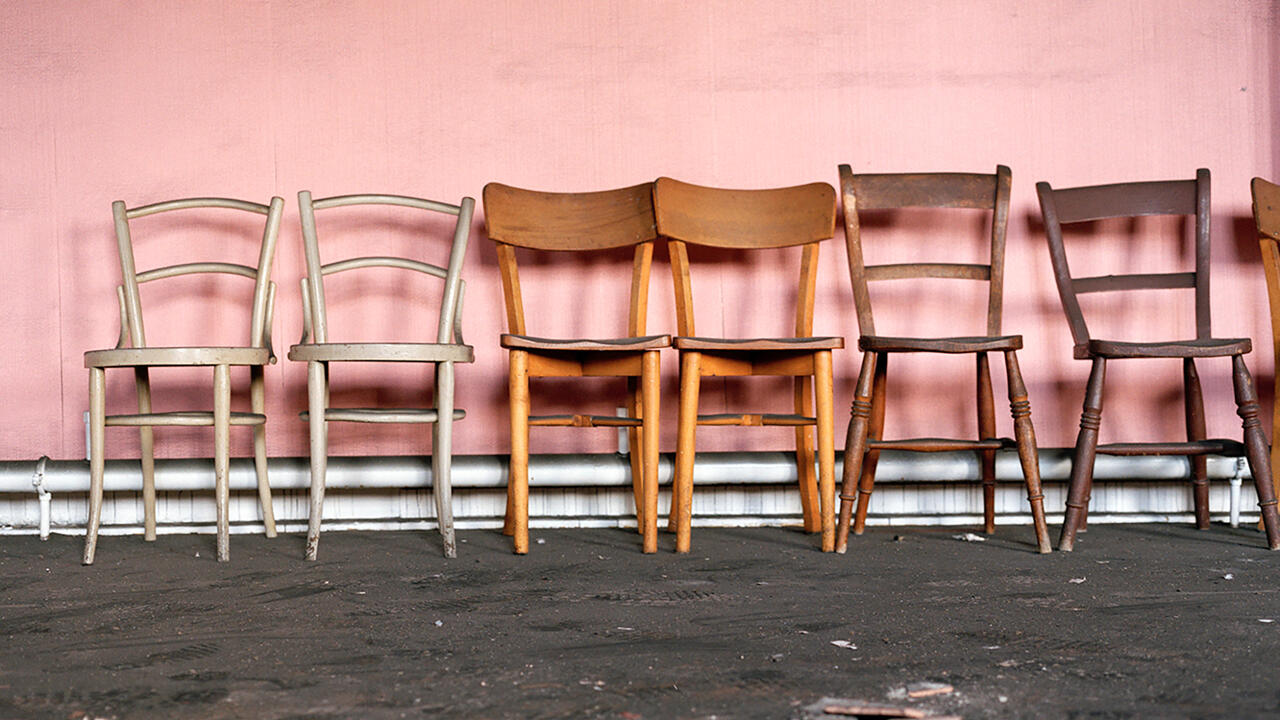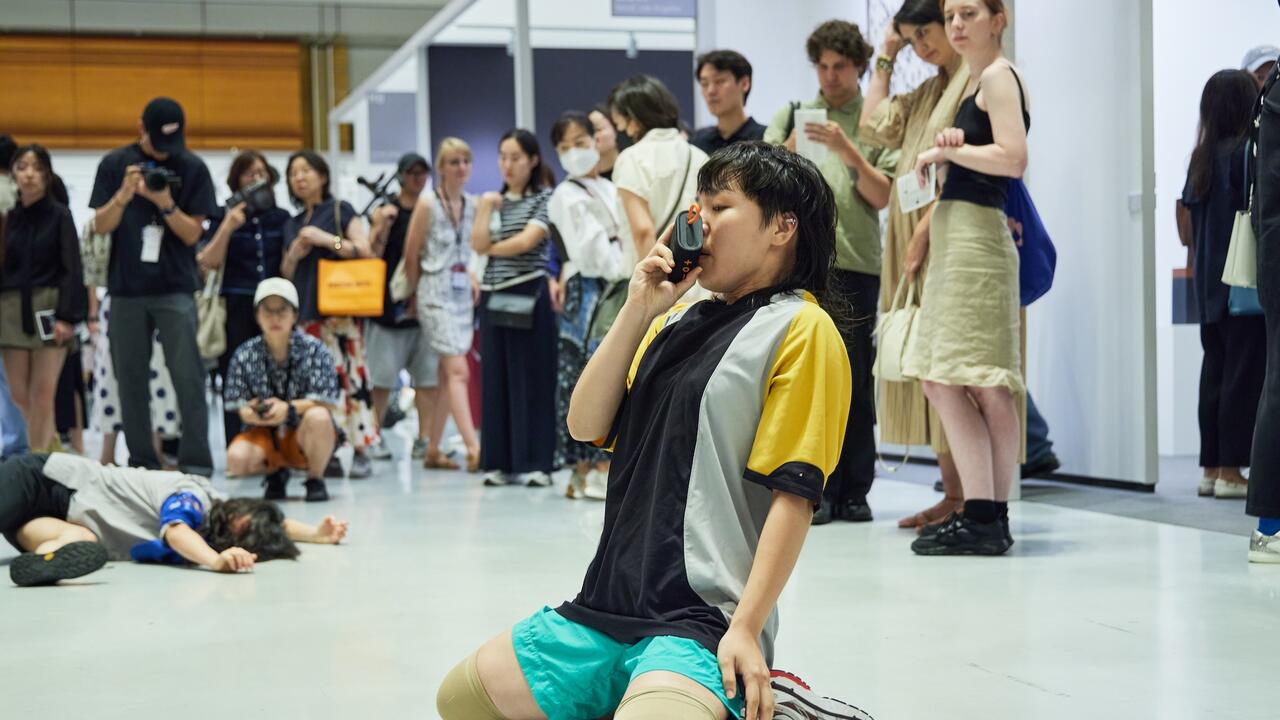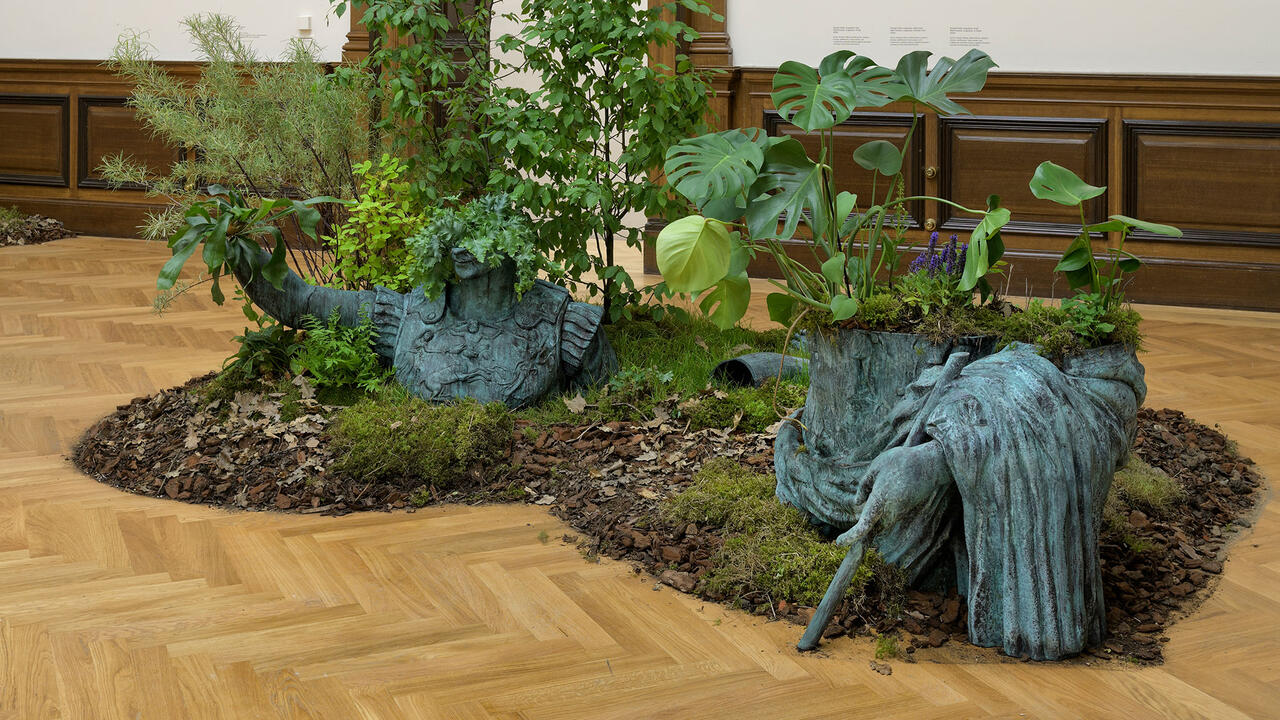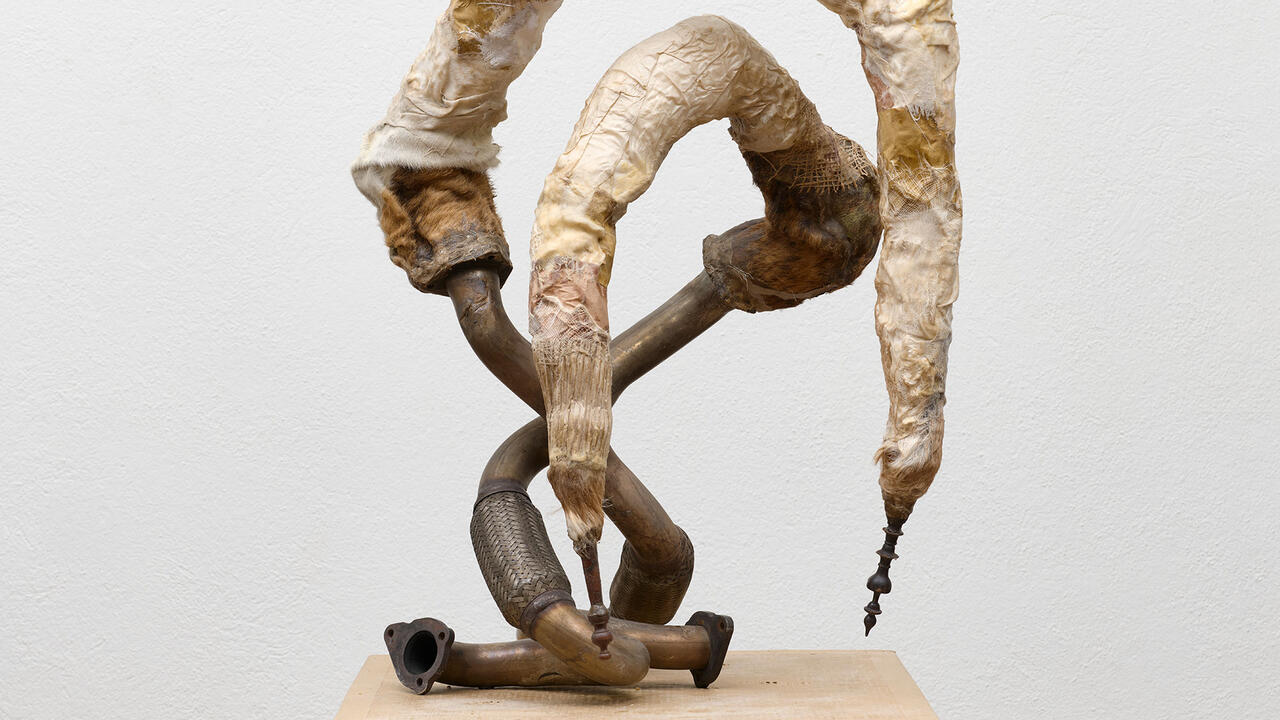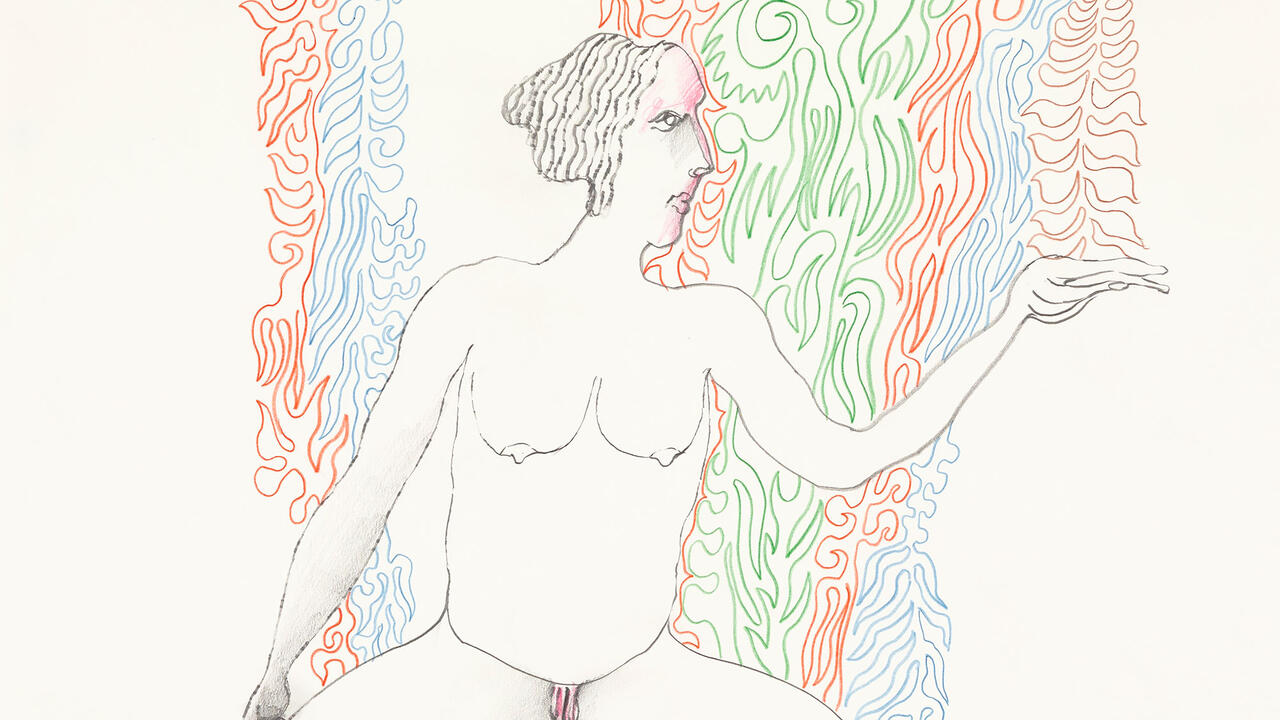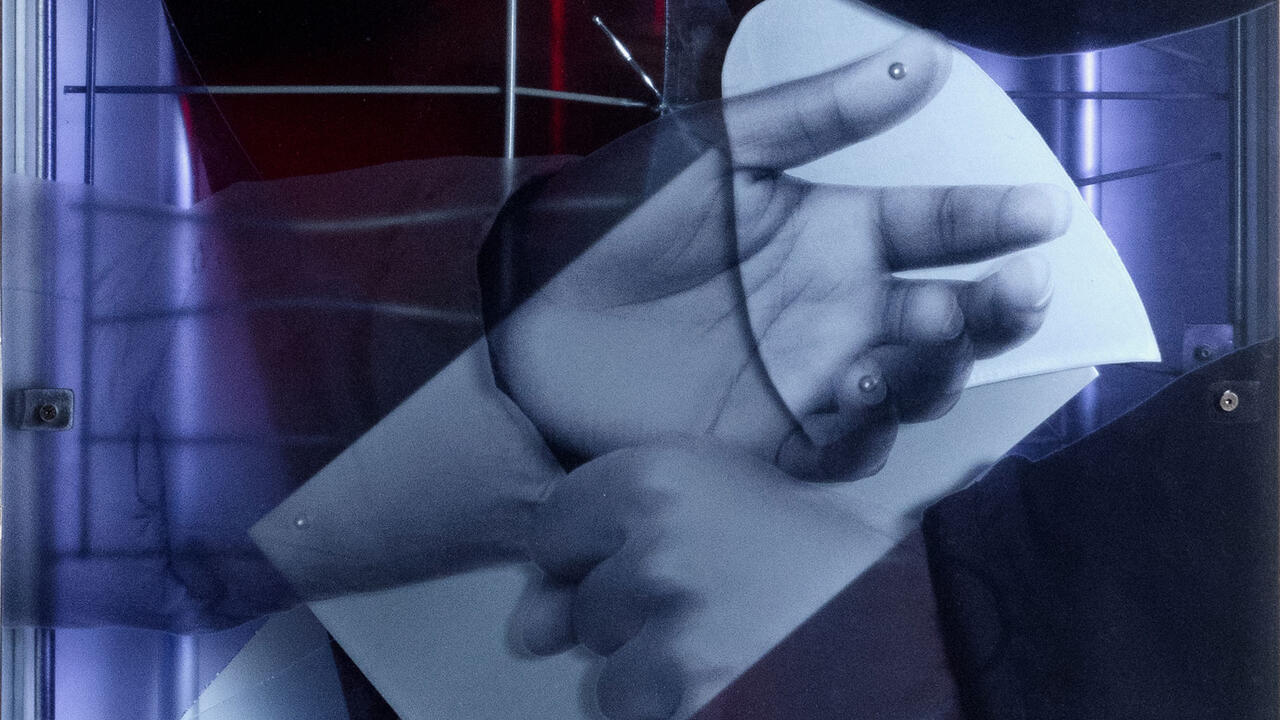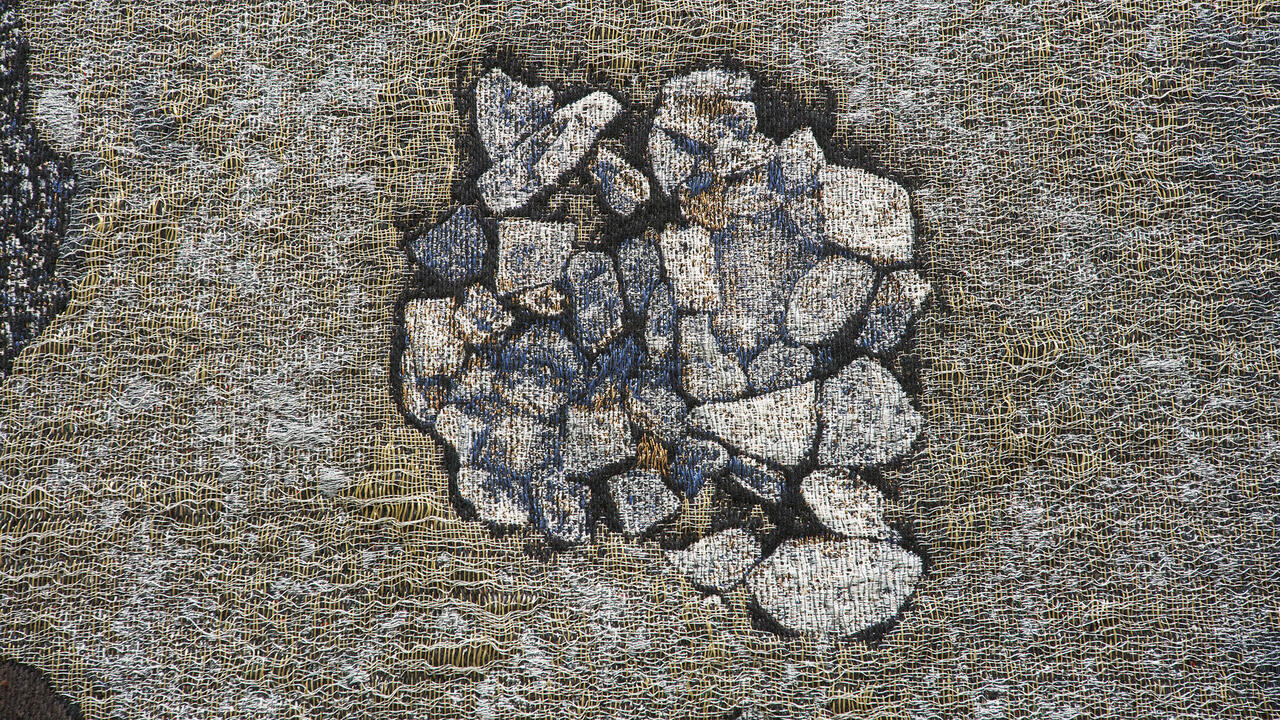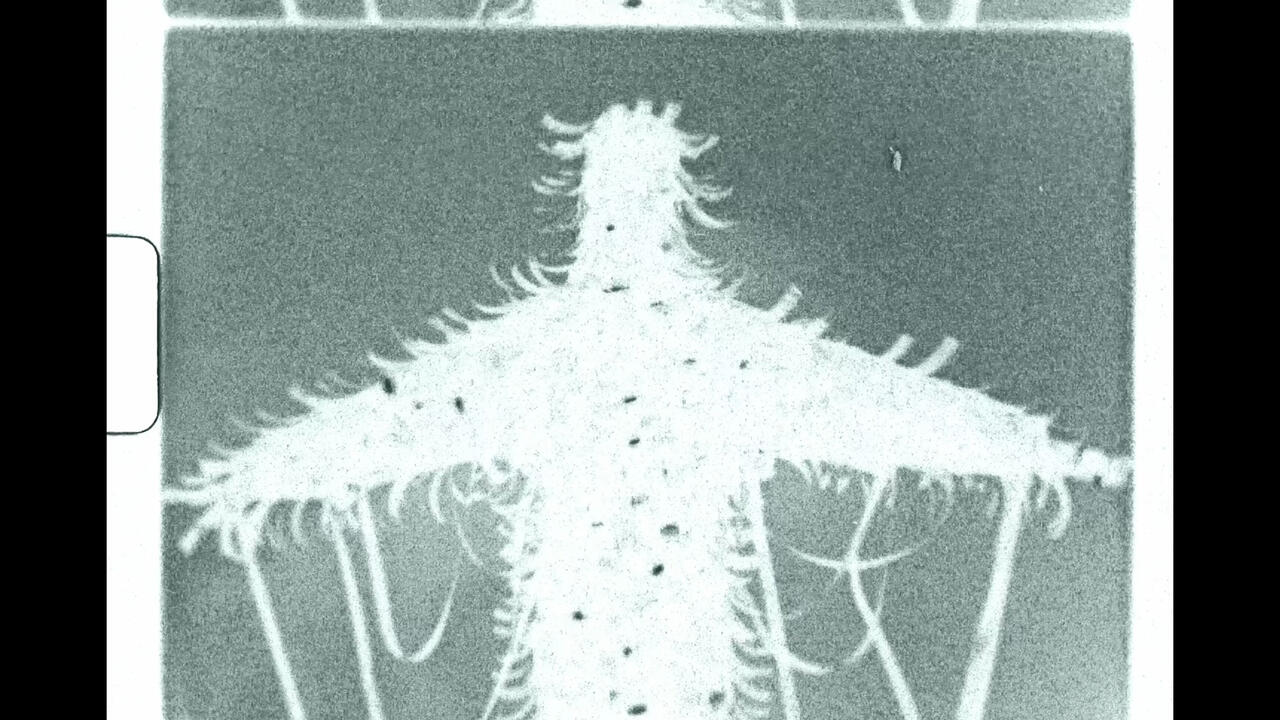Hamad Butt’s Arch Minimalism
A spectre of danger permeates the works in this impressive survey at the Irish Museum of Modern Art, Dublin
A spectre of danger permeates the works in this impressive survey at the Irish Museum of Modern Art, Dublin

When heated to 130.5°C, iodine crystals transform into a purple gas, which can be hazardous if ingested. Hamad Butt’s sculptural installation Familiars Part 1: Substance Sublimation Unit (1994) contains such crystals, which undergo this swift change when they encounter a powerful electric element. Here, they are vacuumed within cylindrical Borosilicate glass vials, which form the rungs of a ladder displayed horizontally against a wall behind a barrier.

A quiet drama and spectre of danger permeates ‘Apprehensions’, the most comprehensive survey to date of Butt’s work. Organized by the Irish Museum of Modern Art’s exhibitions curator, Seán Kissane, with independent academic and curator Dominic Johnson, the show takes place across three floors of a white house set aside from the museum’s central courtyard. Kissane and Johnson’s ambition with the show is to recuperate Butt’s career and situate this brilliant and formally ambitious practice in the canon.
Butt – a gay Pakistani man raised in east London – started studying undergraduate art at Goldsmiths College, London, in 1987, a period associated with the boisterous Young British Artists, including Damien Hirst, who graduated the year before him. However, the ongoing comparison between Butt and this mostly heterosexual group is a misnomer. He has more in common with the precise pop minimalism of Felix Gonzalez-Torres and the charged quotidian objects of Mona Hatoum than he does with Sarah Lucas.

Since he died in 1994, Butt has quietly resurfaced as a younger generation of academics and curators begin to examine the legacies of those lost to HIV/AIDS. The inclusion of Transmission (1990) – an arrangement containing Perspex books and ultraviolet lights also carefully restaged in Ireland – in the chronological rehang of Tate Britain (opened in May 2023) brought his practice to broader attention. But why hasn’t a significant Butt survey happened sooner? Is it because several works require complicated installation and contain dangerous materials? Or is it because British institutions are historically poor at supporting queer artists of colour? Or is it both?
The top floor of the house is a revelation, occupied by four rooms of Butt’s early dry-point etchings, charcoal drawings, oil paintings and personal ephemera, including books and notepads. An illustrative motif lifted from the cover of John Wyndham’s post-apocalyptic novel The Day of the Triffids (1951) appears occasionally throughout ‘Apprehensions’. It’s a scratchy and ugly botanical detail that peppers these trepidatious works, such as Transmission – Two Triffids (c.1990). For Butt, the fictional carnivorous plant from Wyndham’s novel is a pertinent allegory for contagion.

In the final room, at the top of the house, a sedate home video of Butt from 1994 proposes a domestic counterpoint to the arch and combative tenor of the sculptural installations on the lower floors. The artist appears from the neck up, resting horizontally on a sofa six months before his death. His younger brother, Jamal, now the arbiter of his estate, can be heard off-camera asking him questions about his works. Butt was handsome, erudite and terribly unwell. It’s a heart-breaking and humanising conclusion to an important show.

Unlike other surveys of queer British artists from the 1980s and ’90s, such as Derek Jarman’s ‘Modern Nature’ at the John Hansard Gallery or Michael Clark’s ‘Cosmic Dancer’ at the Barbican Art Gallery (both 2021), ‘Apprehensions’ does not give the impression of an eclectic lifestyle streamlined and edited to fit into a museum. Butt’s visually enticing installation work was always precisely staged for the gallery and – in the vein of minimalism – completed by the viewer’s own imagination and presence. You want to reach out and touch these objects, but they might kill you.
‘Hamad Butt: Apprehensions’ is on view at the Irish Museum of Modern Art until 5 May
Main image: Hamad Butt, Two Figures with Lightbulb (detail), c.1982–84, oil on canvas, 1.4 × 1.2 m. Courtesy: Jamal Butt





